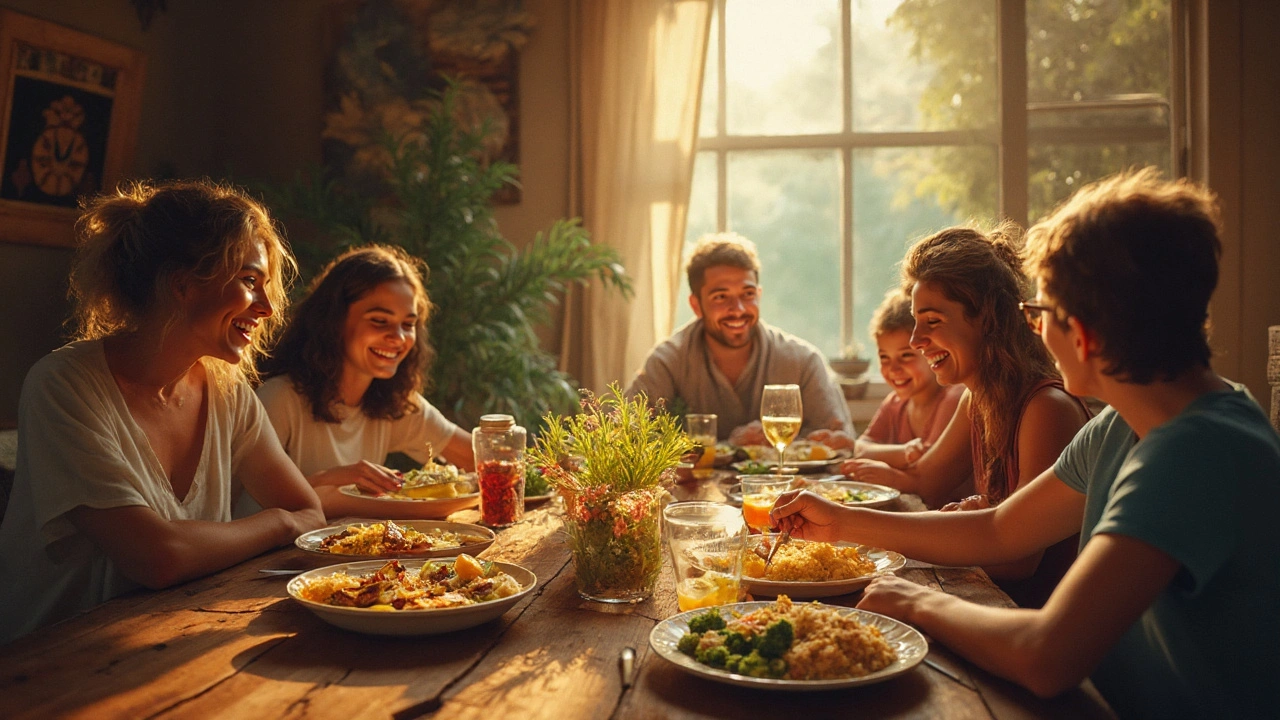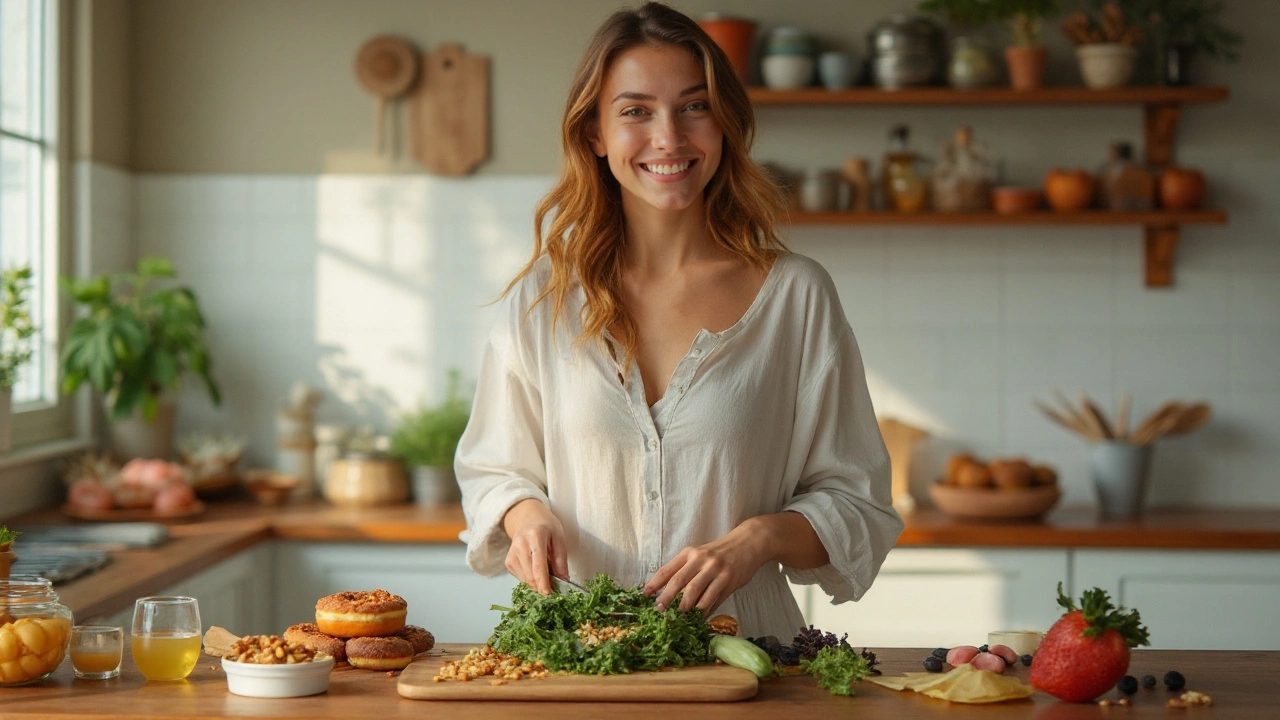Quick Take
- High‑sugar and refined‑carb foods raise blood glucose, letting Candida albicans thrive on the skin.
- Probiotic‑rich, low‑glycemic foods (yogurt, kimchi, leafy greens) support a healthy gut microbiome that competes with Candida for nutrients.
- Antifungal nutrients such as garlic, oregano oil, and coconut oil have direct inhibitory effects on the fungus.
- Aim for a balanced plate: protein + healthy fat + low‑GI vegetables at each meal.
- Drink plenty of water and limit alcohol, which spikes insulin and weakens immune defenses.
How Your Diet Touches the Skin
Skin yeast infection is a cutaneous candidiasis that occurs when the fungus Candida albicans overgrows on the epidermis, creating red, itchy patches that love warm, moist spots.
Two physiological pathways link what you eat to that rash:
- Blood‑sugar surge. Sugary meals spike insulin, which in turn raises the amount of glucose leaking into sweat and interstitial fluid. Candida feeds on this extra sugar, multiplying faster.
- Microbial competition. A diverse gut microbiome produces short‑chain fatty acids that travel through the bloodstream and keep fungal growth in check. Disruptive diets (high‑processed, low‑fiber) shrink those helpful bacteria, handing Candida a free pass.
When both spikes happen together-high sugar and a weakened microbiome-the skin becomes a perfect launchpad for infection.
Foods That Feed the Fungus
Not every carb is evil, but some are practically "Candida candy".
- High‑sugar foods - candy, sodas, pastries. Their glycemic index (GI) often exceeds 70, meaning they dump glucose into the bloodstream within minutes.
- Refined carbohydrates - white bread, white rice, regular pasta. They break down quickly, similarly raising insulin. \n
- Alcohol - especially sweet wines and cocktails. Alcohol is converted to sugar in the liver, adding another glucose surge.
- Dairy with added sugar - flavored yogurts, sweetened milk. The lactose plus added sugar is a double‑hit.
- Fermented foods with live yeast - certain breads, kombucha, and some beers. While many fermented foods help, those that contain residual yeast can act as a direct inoculum for skin‑prone people.
Cutting back on these items lowers the glucose pool Candida needs to proliferate.
Foods That Fight the Fungus
Below are the star players that starve Candida and boost your immune armor.
- Probiotic foods - plain Greek yogurt, kefir, sauerkraut, kimchi. They flood the gut with beneficial lactobacilli that produce lactic acid, an environment Candida dislikes.
- Low‑glycemic vegetables - leafy greens, broccoli, bell peppers. Their GI is usually under 15, keeping blood sugar steady.
- Antifungal nutrients - garlic (allicin), oregano oil (carvacrol), coconut oil (lauric acid), and ginger. Laboratory studies show they inhibit Candida cell walls.
- Fiber‑rich foods - chia seeds, flaxseeds, legumes. Fiber feeds the good bacteria that outcompete Candida.
- VitaminC‑rich fruits - kiwi, berries, citrus. VitaminC boosts white‑blood‑cell activity that attacks fungal invaders.
Mixing these into each meal creates a "fungus‑resistant" diet.
Sample One‑Day Meal Plan
- Breakfast: Plain Greek yogurt topped with a tablespoon of ground flaxseed and a handful of fresh blueberries. (Probiotic + fiber + low‑GI fruit)
- Mid‑morning snack: A small apple sliced with almond butter. (Low‑GI fruit + healthy fat)
- Lunch: Grilled salmon salad - mixed greens, cucumber, avocado, olive‑oil dressing, and a sprinkle of crushed garlic. (Omega‑3s + antifungal garlic + low‑GI veggies)
- Afternoon snack: A handful of raw walnuts and a cup of herbal tea (ginger‑infused). (Fiber + antifungal ginger)
- Dinner: Stir‑fried chicken breast with broccoli, bell peppers, and a splash of tamari; served over a small portion of quinoa. (Protein + low‑GI grain + antifungal veggies)
- Evening: Warm water with a squeeze of lemon. (Hydration + vitaminC)
Notice the absence of added sugars, refined grains, and alcohol. Each bite balances protein, healthy fat, and low‑glycemic carbs while loading up on antifungal compounds.

Comparison Table: Foods to Encourage vs. Foods to Limit
| Category | Typical Example | Glycemic Index (GI) | Antifungal Compounds | Probiotic Content |
|---|---|---|---|---|
| Encourage | Greek yogurt (plain) | 15 | None | High (live cultures) |
| Encourage | Garlic (raw) | 30 | Allicin | None |
| Encourage | Broccoli | 10 | Sulforaphane | None |
| Limit | White bread | 75 | None | None |
| Limit | Candy bar | 86 | None | None |
| Limit | Sweetened soda | 80 | None | None |
Related Concepts: The Gut‑Skin Axis, Immune Health, and Glycemic Load
The gut‑skin axis is a two‑way street: gut inflammation can trigger skin flare‑ups, and skin infections can send immune signals back to the gut. A diet that balances immune function-through vitaminsA,C,D and zinc-keeps Candida from breaking through the skin barrier.
Another handy metric is glycemic load (GL). While GI looks at the quality of a carbohydrate, GL considers the portion size. A food with a moderate GI can still have a low GL if you eat a small amount. Planning meals around low‑GL choices (e.g., ½ cup quinoa rather than a full cup of white rice) helps keep insulin spikes mild.
Troubleshooting Common Scenarios
- “I’m already low‑sugar, but the rash persists.” Check for hidden sugars-condiments, sauces, and flavored nuts often contain honey or agave.
- “I love toast, can I still have it?” Switch to 100% whole‑grain or sprouted‑grain bread, which has a GI around 55 and adds fiber for the microbiome.
- “I’m vegan; how do I get probiotics?” Choose fermented soy products (tempeh, miso) and non‑dairy kefir made from coconut or oat milk.
- “My skin still feels dry after I cut sugar.” Add omega‑3 rich foods (flaxseed oil, walnuts) to restore barrier lipids.
Next Steps
If you suspect diet is a factor, start with a 2‑week elimination of all high‑GI and sugary items. Track skin changes in a simple journal. After the cleanse, re‑introduce foods one at a time and note any flare‑ups. This trial‑and‑error approach provides personal data that’s more reliable than generic advice.
Pair the dietary tweaks with good skin hygiene-keep affected areas clean, dry, and breathable. If the rash doesn’t improve within three weeks, a healthcare professional can consider topical or oral antifungals.
Frequently Asked Questions
Can occasional sugar cause a skin yeast infection?
Yes. Even a single high‑sugar snack can spike insulin enough to leak glucose through sweat, giving Candida a short‑term food burst. For people prone to cutaneous candidiasis, it’s best to keep sugary treats rare and small.
Are fermented drinks like kombucha safe?
Most kombucha contains beneficial bacteria and modest amounts of yeast. For most individuals it’s fine, but if you have a chronic yeast infection, choose a low‑sugar version or limit intake to a few ounces a day.
What’s the role of garlic in preventing skin candida?
Garlic releases allicin when crushed, a compound that disrupts fungal cell walls. Clinical lab studies show that allicin can inhibit Candida growth at concentrations as low as 0.5mg/mL, making raw or lightly cooked garlic a practical anti‑fungal food.
Do I need to stop all dairy if I have a skin yeast infection?
Plain, unsweetened dairy-especially fermented options like Greek yogurt-can actually help because of the live cultures. The key is to avoid dairy that has added sugars (flavored milks, ice cream) which feed Candida.
How long should I follow the anti‑fungal diet before seeing results?
Most people notice a reduction in itching and redness within 7‑10 days if they strictly limit sugar and boost probiotic intake. Full clearance of a thick rash may take 2‑3weeks, depending on severity and personal metabolism.


Ernie Rogers
September 25 2025Cutting sugar is good but America loves its donuts.